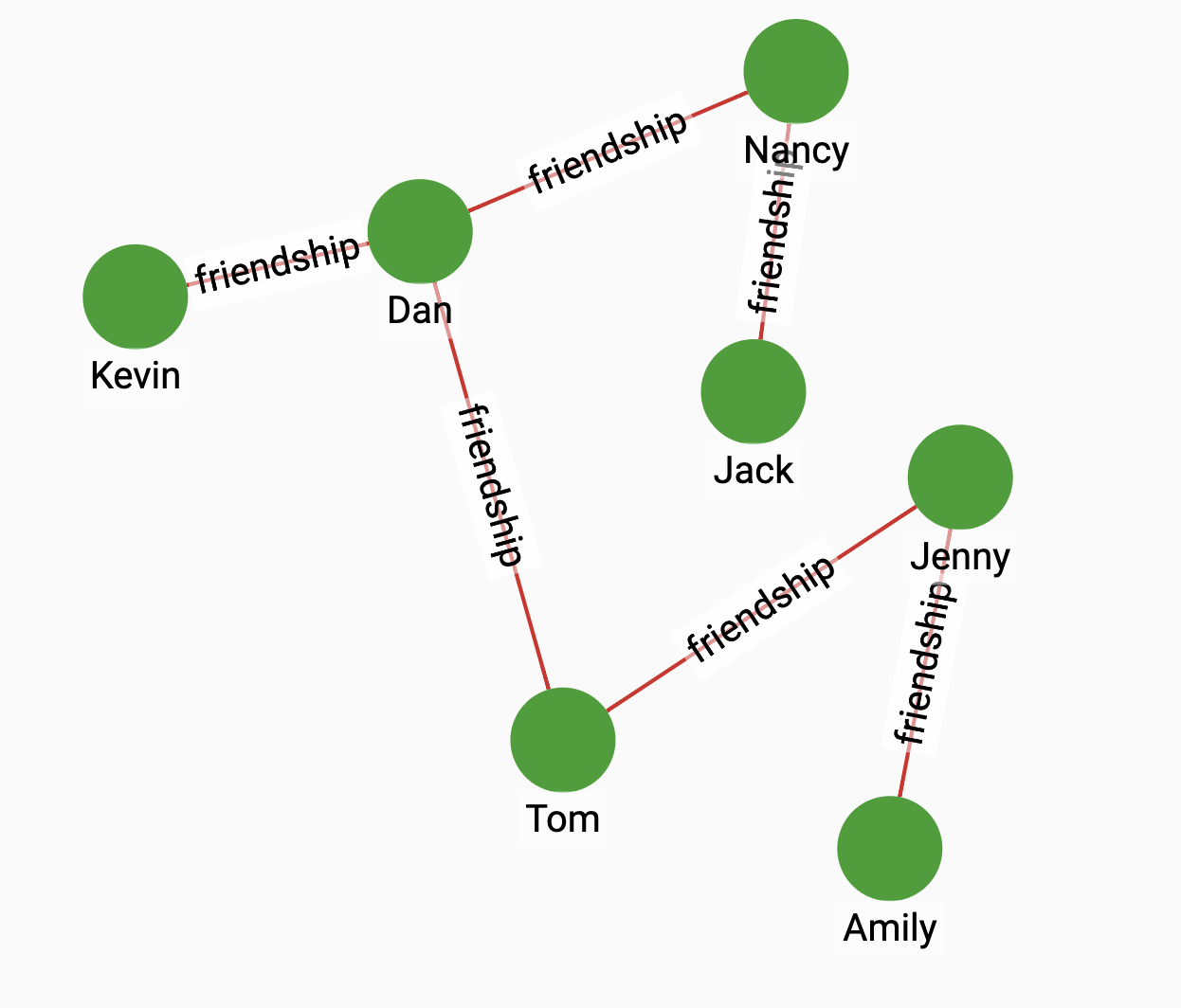Degree Centrality
Degree centrality is defined as the number of edges incident upon a node (i.e., the number of ties that a node has). The degree can be interpreted in terms of the immediate risk of a node for catching whatever is flowing through the network (such as a virus, or some information).
Specification
CREATE QUERY tg_degree_cent(SET<STRING> v_type, SET<STRING> e_type, SET<STRING> re_type, BOOL in_degree = TRUE, BOOL out_degree = TRUE, INT top_k=100, BOOL print_accum = True, STRING result_attr = "", STRING file_path = "")
Parameters
| Name | Description | Data type |
|---|---|---|
|
A set of vertex types. |
|
|
A set of edge types. |
|
|
A set of reverse edge types. If an edge is undirected, put the edge name in the set as well. |
|
|
Boolean value that indicates whether to count the incoming edges as part of a vertex’s degree centrality. |
|
|
Boolean value that indicates whether to count the outgoing edges as part of a vertex’s degree centrality. |
|
|
The number of vertices with the highest scores to return. |
|
|
If true, print results to JSON output. |
|
|
If not empty, save the degree centrality score of each vertex to this attribute. |
|
|
If not empty, save results in CSV to this file. |
|
Example
Suppose we have the following graph:

Running the query on the graph will show that Dan has the highest degree centrality:
RUN QUERY tg_degree_cent(["person"], ["friendship"],["friendship"]){
"error": false,
"message": "",
"version": {
"schema": 2,
"edition": "enterprise",
"api": "v2"
},
"results": [{"top_scores": [
{
"score": 8,
"Vertex_ID": "Dan"
},
{
"score": 6,
"Vertex_ID": "Jenny"
},
{
"score": 4,
"Vertex_ID": "Nancy"
},
{
"score": 2,
"Vertex_ID": "Kevin"
},
{
"score": 2,
"Vertex_ID": "Amily"
},
{
"score": 2,
"Vertex_ID": "Jack"
}
]}]
}